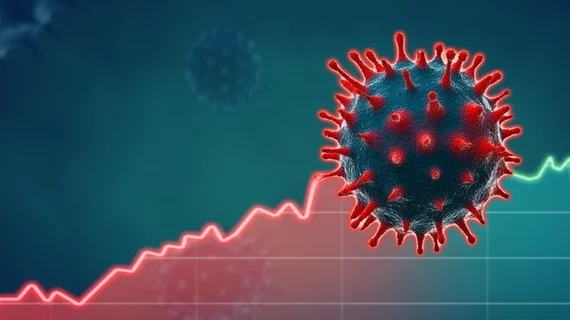As delta variant surges, imaging giant RadNet preparing for possibility of further stay-at-home orders
RadNet is watching delta variant numbers closely and is prepared for the possible return of COVID-19 shutdowns, if numbers continue trending in the wrong direction, company officials said Monday.
The U.S. is averaging more than 100,000 new cases of the virus per day and nearly 500 deaths with 44,000 hospitalized, according to the CDC. In Texas, Gov. Greg Abbott has reportedly asked hospitals to postpone elective procedures to make room for a flood of COVID patients.
With those numbers as a backdrop, RadNet said it’s preparing for the possibility of further lockdowns. The Los Angeles-based, publicly traded company operates 353 outpatient imaging centers, employing 500 radiologists with networks in New Jersey, New York, Delaware, Maryland, California and Florida.
“Obviously with the rise of the new delta variant, we remain vigilant and ready to take further protective actions should new restrictions or stay-at-home orders be implemented,” President and CEO Howard Berger, MD, told investors Aug. 9 during the company’s second quarter earnings call.
Despite rising COVID concerns, RadNet logged “record” numbers during the three months that ended June 30. Revenue increased more than 75% up to nearly $334 million in Q2 compared to the same period in 2020, when the pandemic began to take hold. Earnings — before interest, taxes, depreciation and amortization — swelled more than 150% year over year, up to $56.6 million.
The pandemic hit RadNet hard last year, forcing it to furlough employees, temporarily close centers, and rely on government relief. But numbers have bounced back strong in Q2 as patients returned to using healthcare services “with more normalcy,” Berger said. PET/CT volume increased almost 29% compared to the same period in 2020, while CT leapt 68% and MRI 88%. Overall volume — including X-ray, ultrasound, mammography and other exams — was up about 93% year over year, or more than 80% on a same-center basis.
Given the upticks, RadNet revised its investor guidance for 2021 to account for the rosier picture. But COVID-19 still looms as a potential disruption in 2021’s second half, officials cautioned. The company has mandated mask-wearing for employees and patients at its centers and continues practicing social distancing and utilizing safety barriers at reception desks.
“While our revised guidance is reflective of our confidence and optimism regarding the rest of the year’s performance, we remain cognizant of the possibility of an additional surge of COVID-19 or its delta variant in any or all of our regional markets, and are prepared to respond appropriately,” Berger said in prepared remarks.

